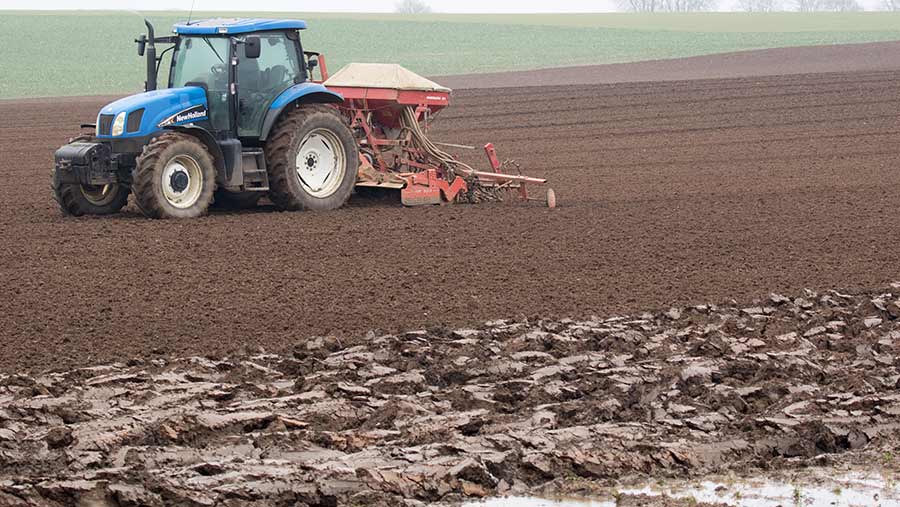AHDB funding gap as fewer plantings hits levy income
 © Tim Scrivener
© Tim Scrivener A considerably smaller UK cropping area after a prolonged wet winter has left AHDB Cereals and Oilseeds facing a future funding challenge, with lower production volumes expected to hit the levy board’s income.
Despite an increase in levy rates from April this year, the sector body may still be worse off this harvest as a result of the heavily reduced volumes of grain that the levy will be paid on.
Lower income will mean cuts and concessions in some areas, at least in the short term.
See also: Huge cuts to wheat and rapeseed plantings for harvest 2024
The area of fallow arable land in the UK is forecast to have increased by almost 80% year on year, taking a much larger area out of production.
The wheat area is back by about 15% and could face further cuts.
AHDB sector chairman Tom Clarke said the levy collected for cereals and oilseeds was forecast at just below £11m for the year to this April.
Despite a levy rate increase of about 25%, the forecast is that total revenue will remain much the same for 2024-25, or potentially even a bit lower.
Mr Clarke said: “It’s difficult because we are not exactly sure what the harvest will be. There’s a lot of moving parts.
“In previous years when we have had bad winters, spring plantings have compensated. But the weather has continued to be wet and we don’t know how well the crops will survive that have been planted.
“We also don’t know what the weather is going to be like for the rest of the year, and we don’t know what the yields will be like.
“So there is a wide spectrum of possible harvests, which means there is a wide spectrum of possible revenue for the AHDB.”
Mr Clarke said the sector had set a conservative budget and had a contingency for a wheat harvest of about 9m tonnes.
“Officially, we are still expecting about 10m tonnes, but the sector council wanted to be careful,” he said.
Harvest estimate
Those figures compare with a wheat harvest of about 14m tonnes last year, according to Defra.
A 9m-tonne wheat harvest would be the lowest for more than 20 years and equate to a fall of about 36% on 2023 levels and 42% below 2022 figures.
Mr Clarke added: “We had promised a lot in terms of increasing the levy and what more we are going to deliver for levy payers.
“This has kicked a hole in that plan, but we have taken measures to make sure that even with a reduced budget we can still reorientate our priorities so that we can deliver more value to our levy payers.
“Our ambition was to fund an extra £1m of research, having had it cut for the past 11 years. We are still going to increase this pot, but probably not by as much this year simply because we don’t have the funds.
“We are looking at other areas where we can take a break from activities with a view that we can restart them, assuming we have a more normal year next year.”
The levy board still plans to allocate part of its budget to research investigating potential environmental and carbon markets, and its ongoing work delving into assurance standards and Red Tractor.
The AHDB is due to release its latest crop production figures in the coming weeks, which should help to indicate whether further cuts to production are likely.
New levy rates from April 2024
Cereals growers will pay a levy to the AHDB of 59p/t, up from 46p/t.
The levy is paid on wheat, barley, oats, rye and triticale, but not maize.
The AHDB will also receive a levy from cereal buyers at 4.8p/t, cereal processors (human and industrial) at 12p/t and cereal processors (feed) at 5.8p/t.
The oilseeds levy, which covers rapeseed, linseed, soya bean oil and sunflower seed, will be at a flat rate of 94p/t.
